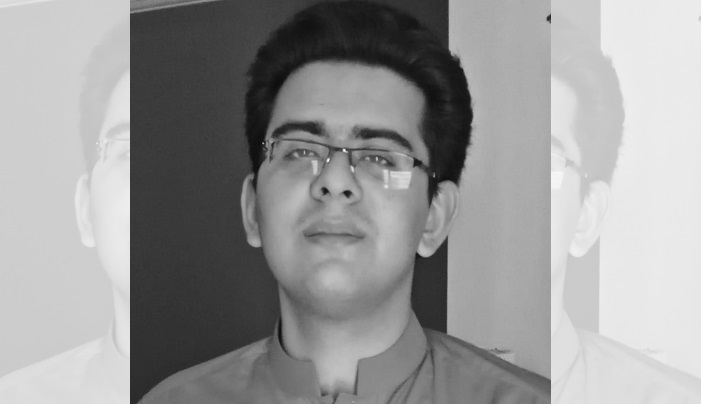In his column, Umair Javeed wrote, “Ethnic conflict was around when Pakistan became an independent state.”
Since the beginning of the contemporary nation-state system, ethnic conflicts have been a prominent component. Pakistan’s history has also seen many ethnically driven wars, one of which also resulted in the country’s division in 1971. The ongoing low-key fighting in the Balochistan and Khyber Pakhtunkhwa regions is still hampering the general growth of Pakistan. Understanding ethnic conflicts’ dynamics, causes, and components is crucial.
To theorize this issue, we need to reflect on Pakistan’s pre-independence and post-independence history. The territory in which Pakistan consists today was relatively weaker in terms of political and economic indicators except for Punjab. Therefore, the ideology of Pakistan was the driving force behind the collective efforts of the people, irrespective of ethnic differences, to establish a state based on Islam. Theoretically, it is accurate because Muslims are one, and the overarching goal of the freedom movement was to establish a state where Islamic ideology would rule. However, this ideological support was unavailable immediately after the partition, and the ideological fervour that served as the driving force behind the freedom movement could not be maintained at its peak during the post-independence period.
Since 1947, Pakistan’s state and society have been entangled in a web of conflicting, crosscutting social and political ideologies. Although many important and complex issues face the nation, ethnicity has emerged as the most important and delicate subject.
Pakistan’s challenge has been to forge a national identity out of a variety of regional and linguistic allegiances. Ideology was thought to be the right dough for Pakistan’s usable mould, but ideals were frustrated when societal, regional, linguistic and racial realities started to emerge, and ideological hegemony was eroding. Consequently, ethnic identities began to develop in 1948.
When Urdu was proclaimed the national language, the Bengalis started to speak out and use agitational strategies. The Bengalis showed their long-standing aggression on this move because during British Raj, the Hindi and Urdu languages received state patronage, and as a result, Bengali and Sindhi languages were slaughtered. They argued that the language spoken by the majority should be recognized as the national tongue. Dhaka University students staged a parade in support of their language, but the administration chose to use force against the demonstrators rather than try to persuade them. This incident gave ethnic identities a reason to reappear.
Even with the 1949 Objective Resolution, Bengalis were not satisfied. A door was opened for non-Muslim minorities to strengthen their cores and seek more rights for their existence because of the attitude of religious clergy toward non-Muslim minorities, particularly on the problem of Ahmedies (Majeed).
Moreover, the Political elites from other provinces, who were highly prominent but had lost their lands after partition, were unable to reconcile with their relocation and since they were too frail to reinforce their personalities, they projected regional attitudes. These regional parties—Sindh Muttahida Mahaz, Jeay Sindh, Baloch Verna, Pakhtun Zalmy, and National Awami Party—became active in pressing Pakistan’s political system to grant them provincial autonomy. The central controlling body took such practices, whether deliberate or not, and deepened the divide between East and West Pakistan.
The central government’s poorly thought-out economic policies kept East Pakistan underdeveloped. On one justification or another, the door to the political, administrative, and military echelons of authority was shut against the Bengalis. For instance, there was a definite racial bias during the Ayub Khan regime (1958–1969). Two-thirds of Pakistan’s industrial assets were under the hands of 22 families at the time, most of whom were from West Pakistan.
They also controlled 80% of the banking and 70% of the insurance sectors. Consequently, Sheikh Mujeeb introduced the Six-Point formula, which was ethnically sparked, politically mobilized, and ethnically fueled, bringing dramatic upheavals. Such economic policies were a significant factor in fostering a sense of fear among Bengalis. The divide between East and West Pakistan was not closed by the elections of 1971. These elections facilitated the dissolution of Pakistan. An autonomous Bangladeshi state was created.
It was anticipated that Pakistan would become a unitary country in South Asia following the division of East Pakistan. However, it was impossible. Pakistan’s diverse society has not been able to develop a strong political structure. Pakistan became a state, but nationalism did not develop. As a result, ethnic identities actively returned to the political scene. Underrepresented ethnic groups had complaints. Thus, they rebelled, creating a contentious scenario. Even while numerous administrations created a variety of programmes, such as giving diverse ethnic groups a chance to participate in the formulation of policy, the anticipated outcomes could not be attained.
Despite all these setbacks, the state is still imposing the 19th and 20th-century nationalism of single identity as Muslims, centralization of power and Urdu as a national language. Now the dynamics of society is changed, and this Master narrative needs to be changed to strive for a more inclusive society and create national harmony. This should be achieved through the devolution of powers to the provinces, the right to rule in true terms, the uninterrupted political process, democratization, and the distribution of resources on the principle of equity. Moreover, with intercultural communication and cultural-rights-based negotiations, with the establishment of informal inter-ethnic engagement and formal inter-ethnic associations, we can resolve the issue of ethnic skirmishes.
References
Majeed, G. (n.d.). Ethnicity and Ethnic Conflict in Pakistan. Journal of Political Studies, 51-63. Retrieved from http://pu.edu.pk/images/journal/pols/Currentissue-pdf/Gulshan3.pdf
- Virtual Insanity - 13/01/2024
- A Shattered Patriarchal Soul And The Search For An Answer - 09/12/2023
- Emerging Trends in Student Politics - 12/10/2023





